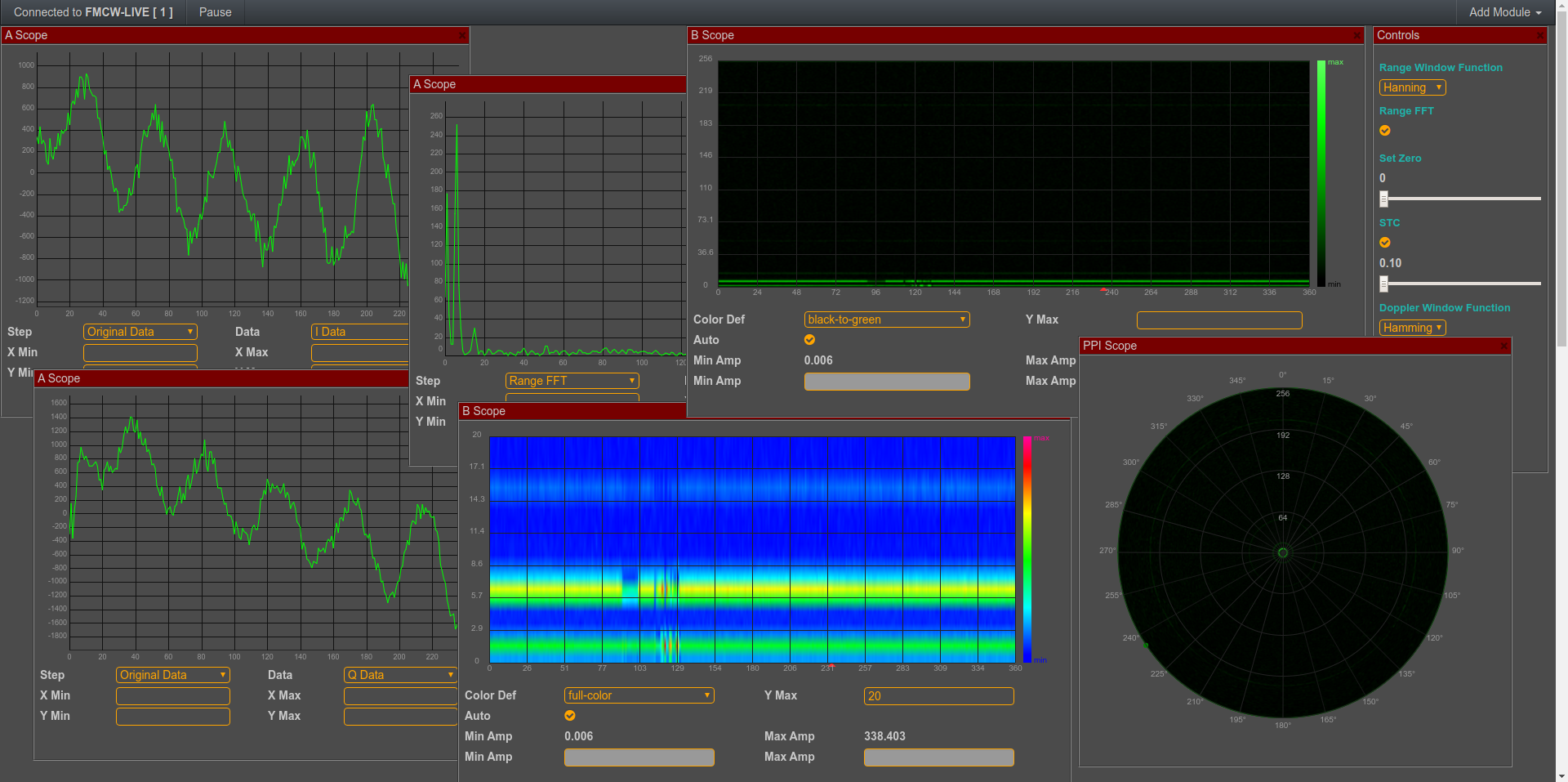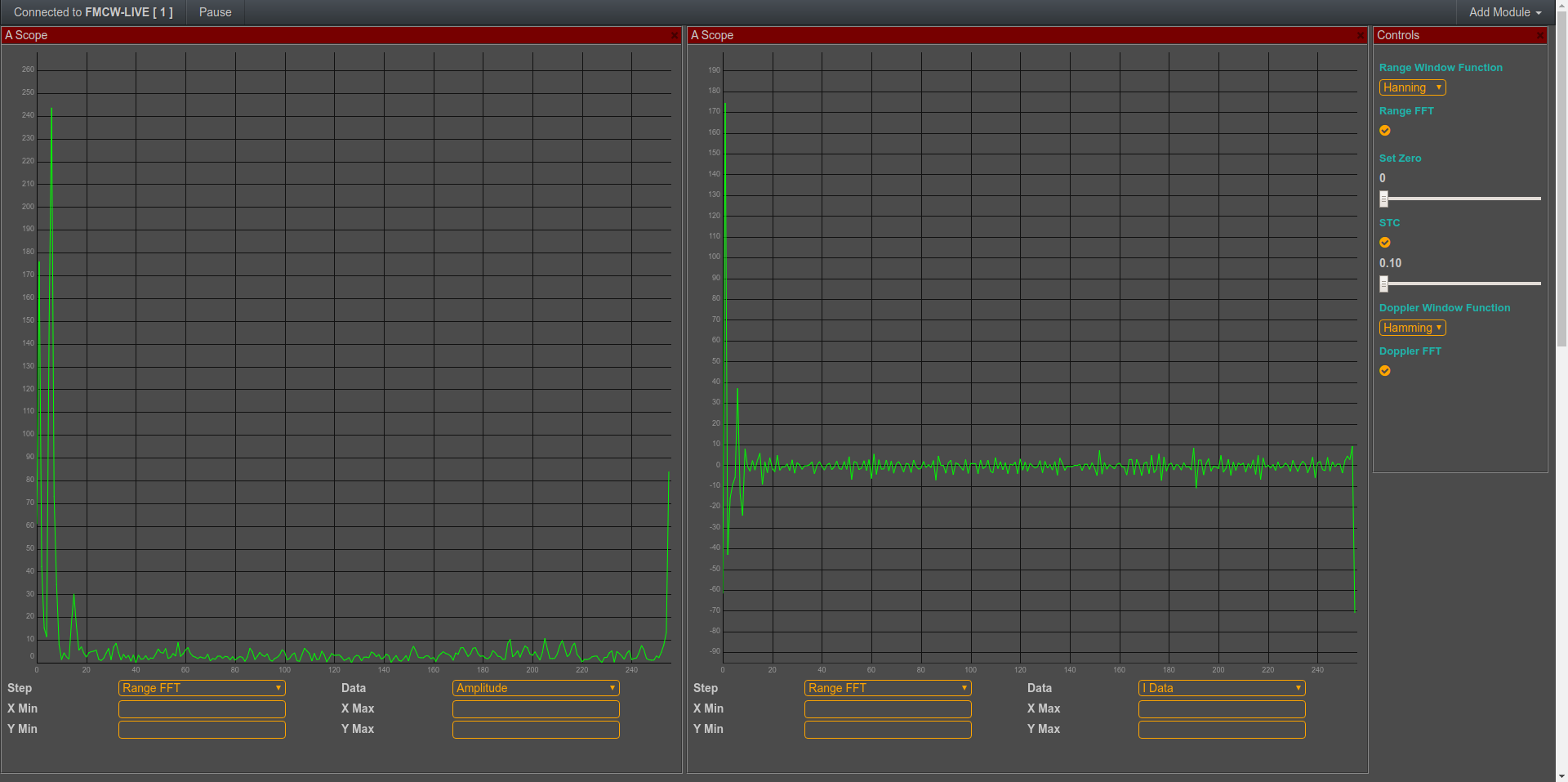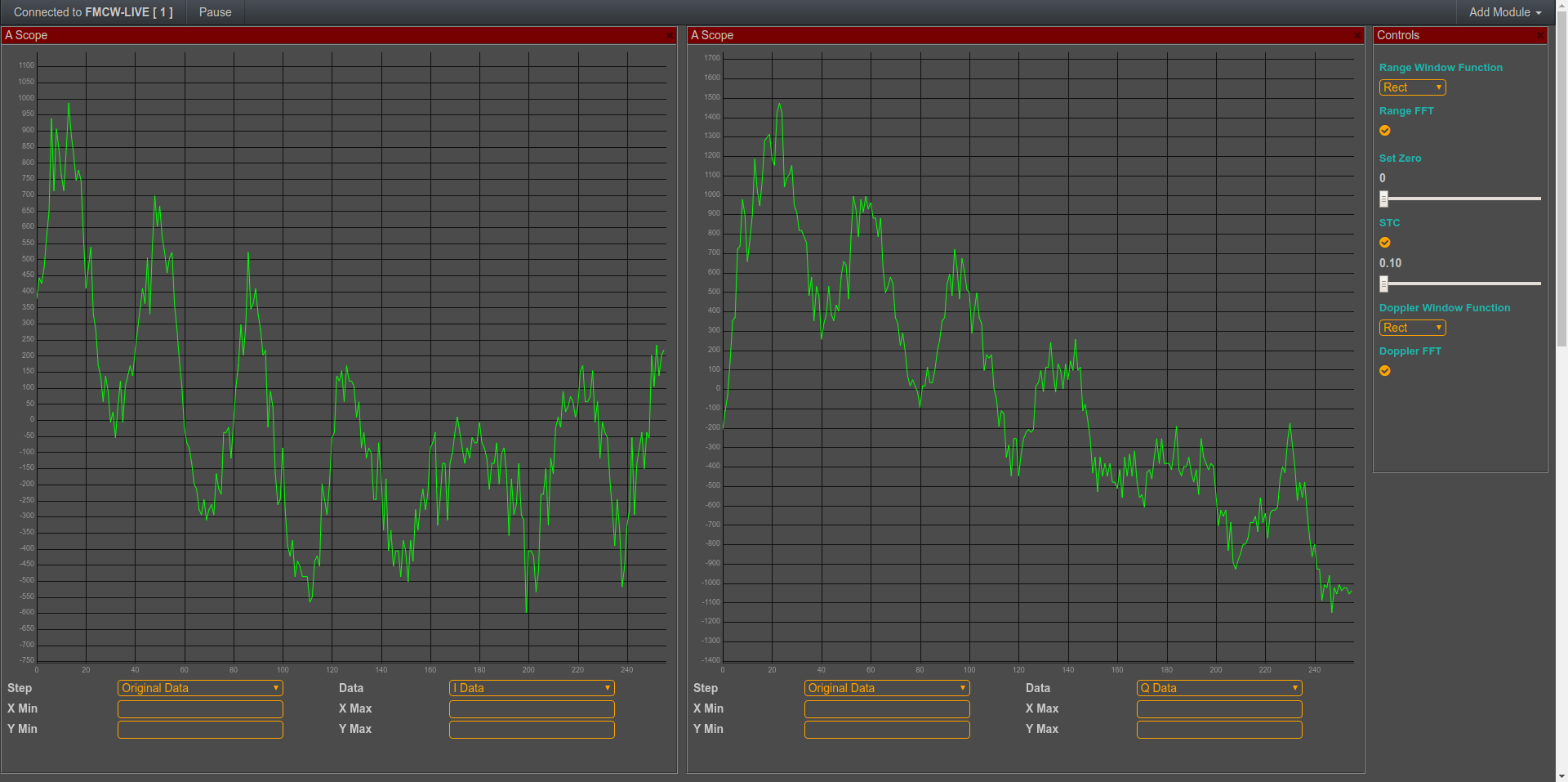All Radars by SkyRadar allow for a concurrent manipulation of radar data. Here we explain the principle. And the advantages.
Influencing output, measuring input
The output of a radar (e.g., the ramp of the FMCW, or simply the rotation or panning of the radar antenna) need to be done by one user only. Normally this person is the coach or lecturer who is organizing the class. Imagine all students could switch rotation on and off when they want - the professor would be driven crazy.
So we password protect these settings.
But everything that can be done with the input data can be done concurrently.
Manipulating the IQ Data
We provide to all users and their client PCs the IQ raw data - even before FFT.
Each user has a complex radar laboratory, emulated in his browser. All kinds of manipulations (e.g., FFT), filters (STC, threshold, Hann, Hamming, etc), Amplification of signals, or the analysis of the I or Q part of the signal.
Many controls and scopes available
We provide A-Scopes, B-Scopes and PPIs and lots of controls.

Floating Panels - endless possibilities
The FreeScopes software from 6.x onwards gives the possibility to arrange several scopes next to eachother. Each scope can start at different stages in the radar manipulation chain. You may for instance compare the signal before or after FFT, or the full amplitude with the I-Data part (see below).

In the example below we compare the I-data part and the Q-Data part:

Supply for MATLAB or EUROCONTOL-ASTERIX
Apart from the normal FreeScopes output, you can receive raw data in MATLAB, Jupyter, or your preferred programming language and apply your algorithms and data processing. You can even send your processed data again to FreeScopes to visualize it in A-Scope, B-Scope or PPI, or visualize it in your application.You can add your filters, scopes, or whatever needed manipulation with the MATLAB toolkit.
Get the code and the instructions free of charge.
For ATC academies, the ASTERIX format output is important and can be fed into other ATC software (e.g. tower simulators) with SkyRadar's ASTERIX client (yes, again, no additional cost).
You can on top of that build your own analytics, using our JSON message stream.
How does that work?
Our radars feed the IQ signal as a JSON message (including IQ-data, timestamp, position of antenna, etc) into your system.
The FreeScopes software does all the manipulations locally in the browser. So each student is independent.
You should have a good-enough computer and browser. For details on computer and browser see here.
Why does SkyRadar do that?
Our object is to provide NextGen training solutions, answering (among others) to these requirements of universities and ATC academies:
- Limited time available to teach many students. So buying expensive equipment that can be used by only one student at a time does not do the job. You will never get all the students properly qualified and educated. So we allow many students to learn concurrently. How many? No limits. The radars are plug and play, no ramp up time. So the lecturers and seminar leaders can easily integrate it into given time slots.
- Qualifying and educating independent thinkers, reaching highest learning goals. Just by watching, a student will not be enabled to apply, analyze or synthesize. He or she needs to work on it, to experiment, to compare various filters. The traditional instructor-led training alone will not bring the highly skilled professionals to answer on today's challenges.
- Attracting Millennials. Universities and ICAO need to attract the best-in-breed millennials. That does not work with dusty old-fashioned equipment. Today's world is connected, modern and with an awesome user experience.
- Limiting the budget. Yes it is well know that we are positioned at about 30% of the costs of our major competitors. We do not put too much money into costly marketing and costly business trips of our sales personnel - but we put it into the development and product optimization. But going one step further: Imagine there is a system for 40.000 EUR. So of it caters for 1 student at the time, this is a pretty high sum. If you allow 10 students to access it, the costs go down to 4.000 EUR per student. If 100 students have access even after class through the university network, e.g. from their student's room or the ATCO in the frame of OTJ-training from his working position, the costs go down to 400 EUR per concurrent student. Ok - how many students do we need to bring it down to 4 EUR? :-)
No limitation, Really?
Really, we do not limit the access. If you have up to 5 students that learn concurrently, they may directly access the radar. Once you exceed this number, we suggest to use SkyRadar's cloudserver. This server will be locally installed in your premises and makes sure (through a message queue) that many students can learn concurrently.
We have tried 1.500 students concurrently. It worked without any decline in performance.




